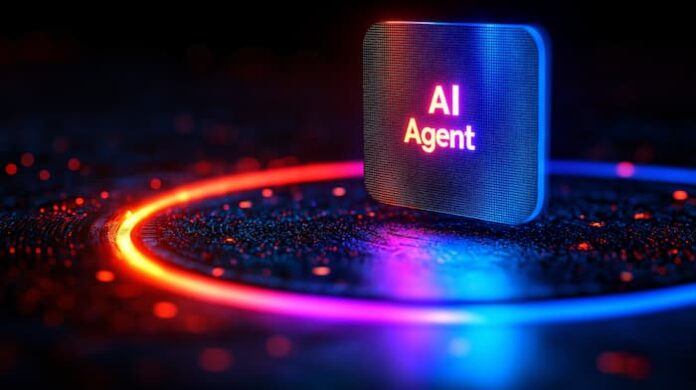As artificial intelligence continues to evolve, HR leaders face a critical challenge: separating genuine agentic AI capabilities that work for their organization’s needs from innovations that aren’t fitting or necessary.
While “many technology vendors are working to build AI agents,” numerous solutions are actually rebrands of existing products meant to capture buyers’ attention, says Eser Rizaoglu, senior director analyst in Gartner’s HR Practice.
According to Rizaoglu, these rebranded products “are primarily designed to rely on human feedback and interaction and do not offer substantial agentic capabilities. He says these offerings create false expectations about the technology’s maturity and what is possible to achieve.
Evaluating true agentic capabilities
To distinguish authentic agentic AI from automated tools with a fresh coat of paint, Rizaoglu recommends HR teams evaluate solutions across a spectrum of capabilities. The key differentiator: whether humans or AI agents are making decisions and taking action.
At the minimal, emerging and basic levels, “a human decides on the next steps, whereas intermediate to advanced AI agents take the actions on behalf of the human,” Rizaoglu explains.
As the technology matures, AI assistants “will progressively gain the ability to plan, make decisions and act on behalf of users, acquiring characteristics of agentic” systems, according to Rizaoglu.
More from Ezer Rizaoglu: Agentic AI in HR: Unpacking the hype and addressing the uncertainty
Preparing for an HR function reshaped by agentic AI
The transformation ahead is substantial. Gartner predicts that by 2030, intelligent agents or LLM-centric interfaces will complete 50% of HR tasks. Rizaoglu identifies recruitment, learning and development and shared services as the three areas where AI agents will reshape HR operations first.
Across these functions, Rizaoglu outlined several skill sets that will become essential, including product management and design, AI literacy and data literacy, prompt engineering, quality assurance and employee and candidate journey mapping.
New roles will also emerge, according to Rizaoglu. In recruitment, organizations may need AI product managers, recruitment agent experts and recruitment ethics experts. L&D teams will likely add gen AI content generators and immersive-learning architects. Shared services may require UX experts focused on employee experience, HR technologists and HR AI agent leads.
This shift requires a fundamental change in how HR professionals approach their work. Rather than simply delivering workflows and services, HR employees must focus on “understanding the experience and product they want end users to have and how they can use the technology to deliver this with AI solutions on their behalf,” Rizaoglu says.
CHROs play a crucial role in guiding this transition. To prepare teams, Rizaoglu recommends people leaders “work with their HR leadership teams to run focus group discussions with their HR staff” around key areas including workflow augmentation, future skill needs and emerging roles.
The reality of using agentic AI

Recruiting represents “the entry point for agentic AI adoption,” Rizaoglu says, calling solutions in this space more advanced than other use case categories because “AI has been embedded into recruitment solutions for much longer than any other part of HR.”
Despite this head start, significant limitations remain throughout the use of AI agents in the HR practice as a whole. Rizaoglu outlined six critical realities HR leaders must understand:
The market remains immature
First, “the agent market isn’t fully mature yet,” Rizaoglu cautions. Organizations should temper expectations about what current technology can deliver.
Agents handle tasks, not full processes
AI agents today handle only discrete tasks rather than complete processes. “Currently, agents are being used in small task steps as they aren’t mature enough to execute end-to-end workflows,” Rizaoglu says, noting that comprehensive workflows require “multi-agent systems.”
Human oversight is essential
Organizations cannot simply set these systems loose and walk away. “Human-in-the-loop is still a critical governance element,” according to Rizaoglu.
Data quality determines success
The technology’s effectiveness depends heavily on data quality and system integration. “You will need clean data and systems that speak to each other if you want your AI agents to execute workflows that traverse multiple systems and data points,” Rizaoglu says.
Standardization is lacking
The lack of industry standardization creates challenges to interoperability. “Protocols in the market,” meaning the rules and ways that agents are built, “are still not set,” Rizaoglu says. Because of this, he warns that agents from different platforms may not be able to work together.
Performance can decline
Finally, performance can be inconsistent over time. “Some HR leaders are currently reporting that agents in HR may work well for a few weeks. However, the accuracy of the AI agent may taper off,” Rizaoglu notes, “meaning [HR teams] have to spend time and effort to improve the accuracy of the AI agent again.”
Despite these challenges, AI agent solutions in recruiting are “continuing to mature.” They’ve already proven to help with candidate sourcing and matching, interview scheduling and generating interview summaries, according to Rizaoglu.



